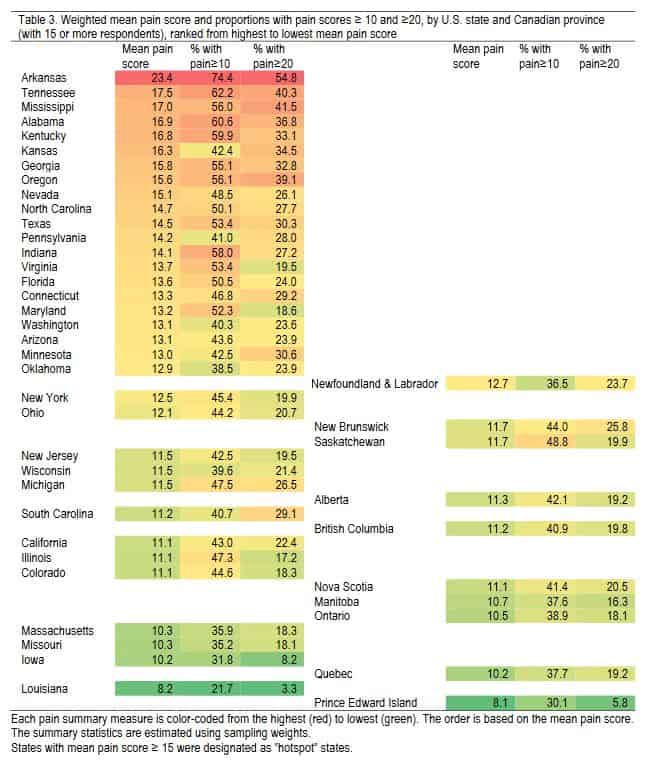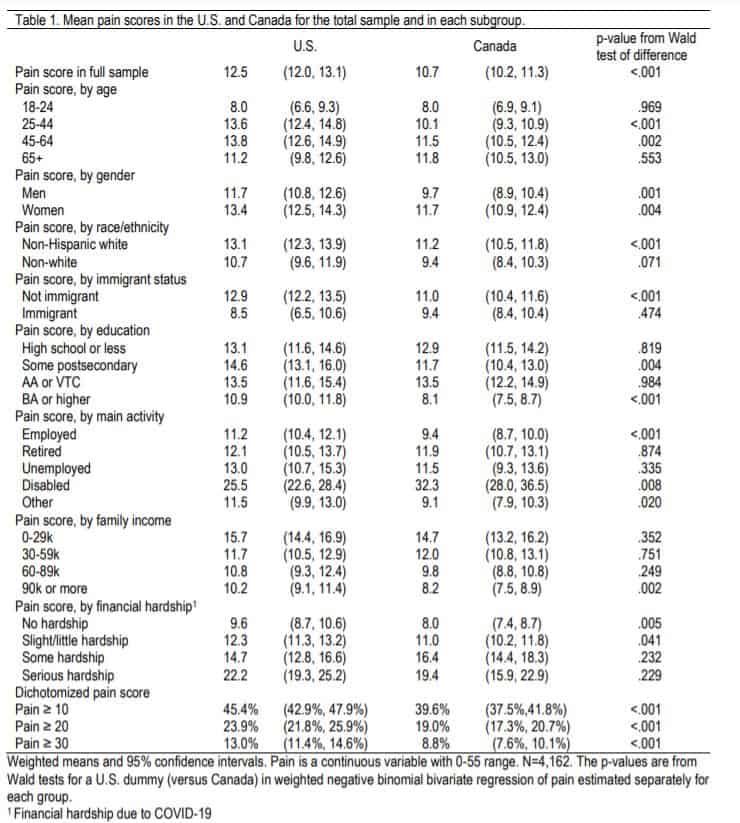Our current understanding of population pain epidemiology is largely based on analyses conducted at the national level.
This emphasis, however, overlooks possible cross-national, and particularly sub-national, geographic variations in pain, despite the fact that geographic comparisons may shed new light on the factors that contribute to or protect against pain.
This research is the first to conduct a comparative analysis of pain in the United States and Canada, comparing the two countries overall and examining variation across states and provinces.
The study relied on cross-sectional data collected in 2020 from 2,124 adults aged 18 years and older in the United States and 2,110 adults aged 18 years and older in Canada.
The scientists conducted their study using a pain assessment tool that assesses pain frequency and pain-related interference with daily activities.
They used regression and decomposition techniques to establish a link between socioeconomic characteristics and pain, and spatial interpolation with inverse-distance weighting to map pain scores.
They discovered markedly and remarkably more pain in the United States than in Canada. The disparity between the two is explained by Americans’ lower economic well-being.
Additionally, they discovered variation in pain across countries; the variation is statistically significant across states in the U.S.
Additionally, they identified nine hotspot states in the Deep South, Appalachia, and the West where respondents reported experiencing significantly more pain than respondents from the rest of the United States or Canada.

They also reported that with respect to gender, pain differences are well known; women report greater pain prevalence, severity, and interference, compared with men.

According to researchers, while some of this excess pain is explained by economic distress, a significant portion remains unexplained; they speculate that it may reflect the sociopolitical context of hotspot states.
Their findings, taken together, identify areas with a high need for pain prevention and management; they also encourage other scholars to consider geographic factors as significant contributors to population pain.
A pre-print version of the research paper is available on the medRxiv* server, while the article undergoes peer review.
Important Note
*medRxiv publishes unpeer-reviewed preliminary scientific reports that should not be considered definitive, guide clinical practice/health-related behaviour, or treated as established information.
